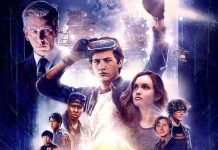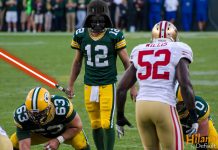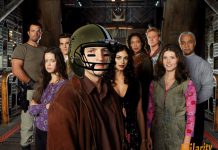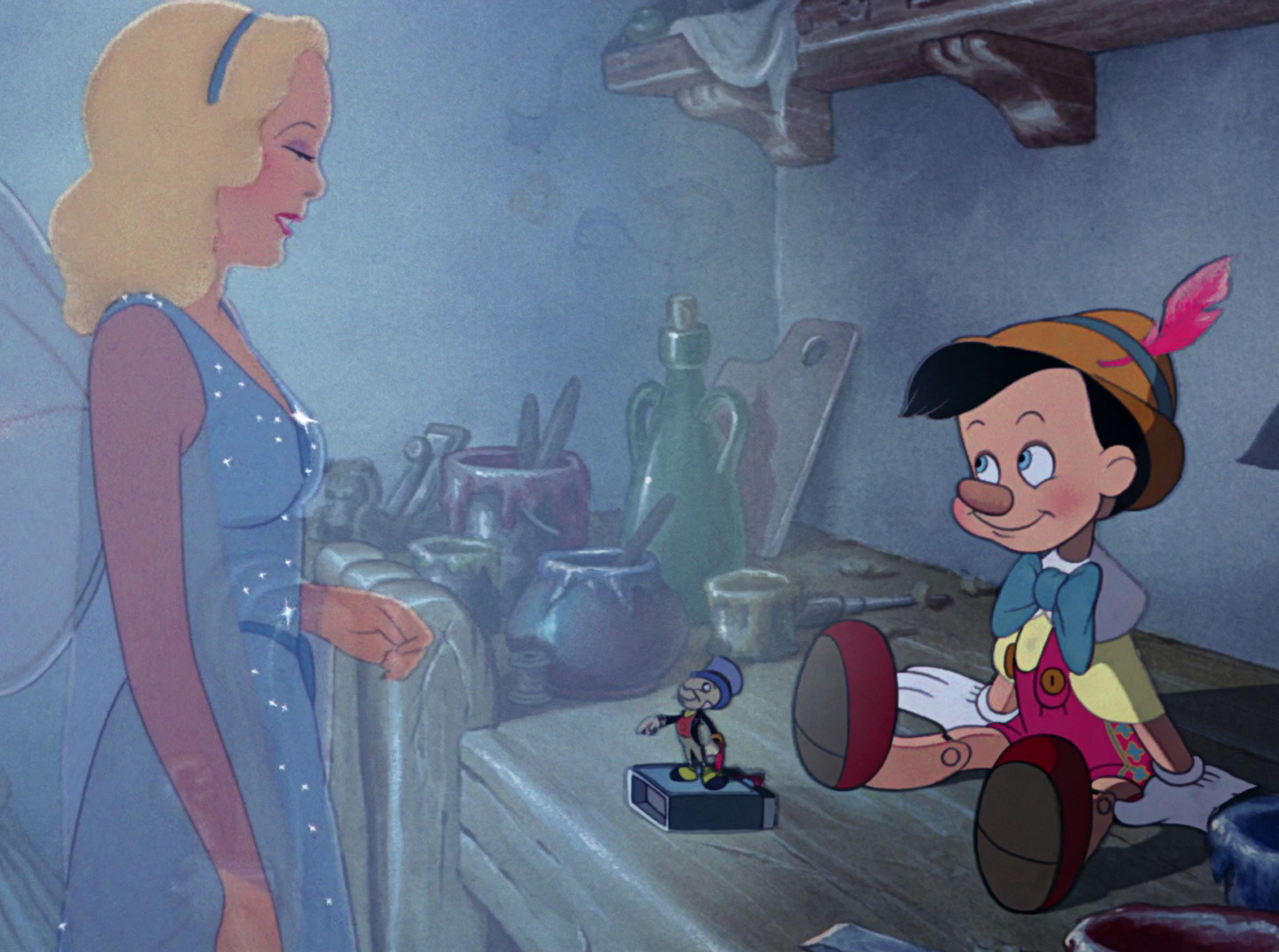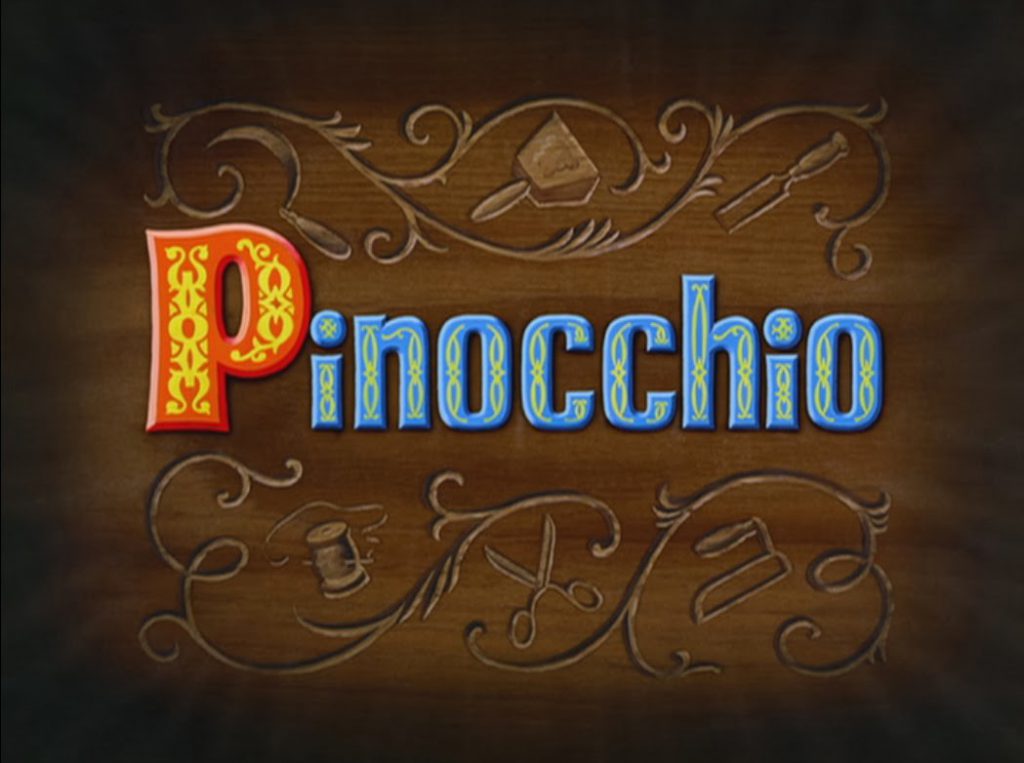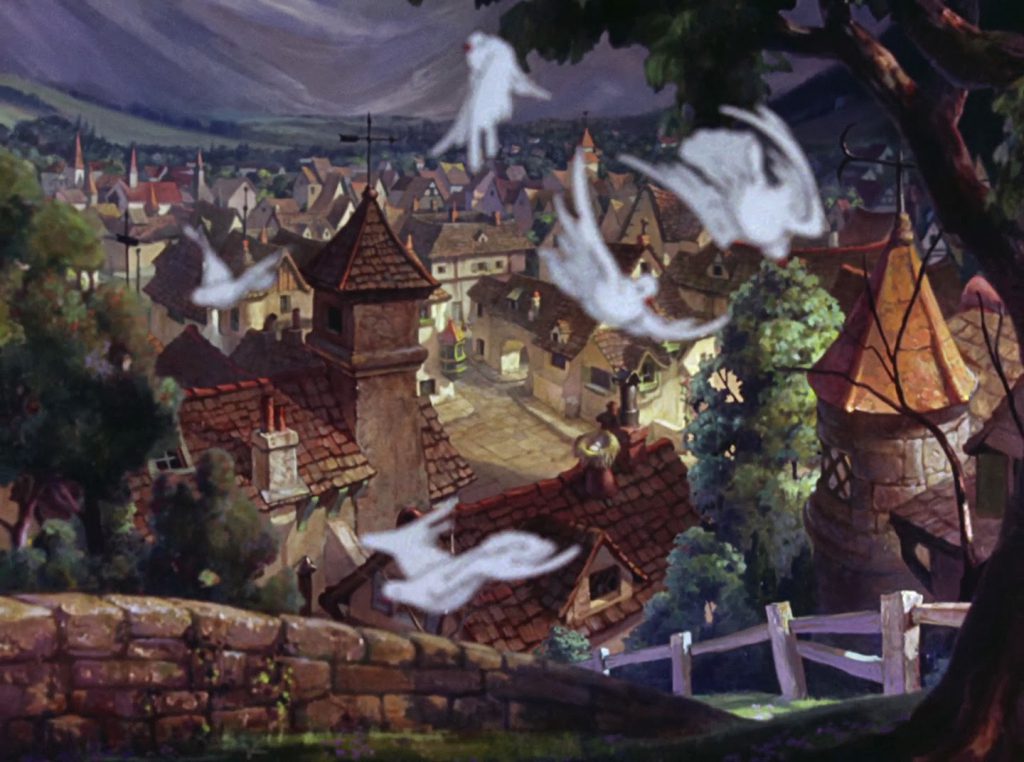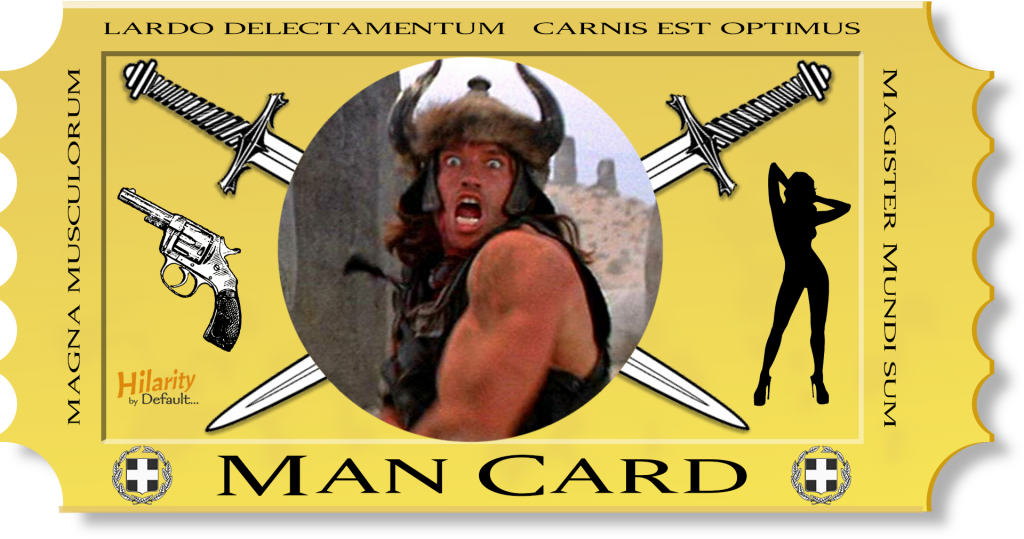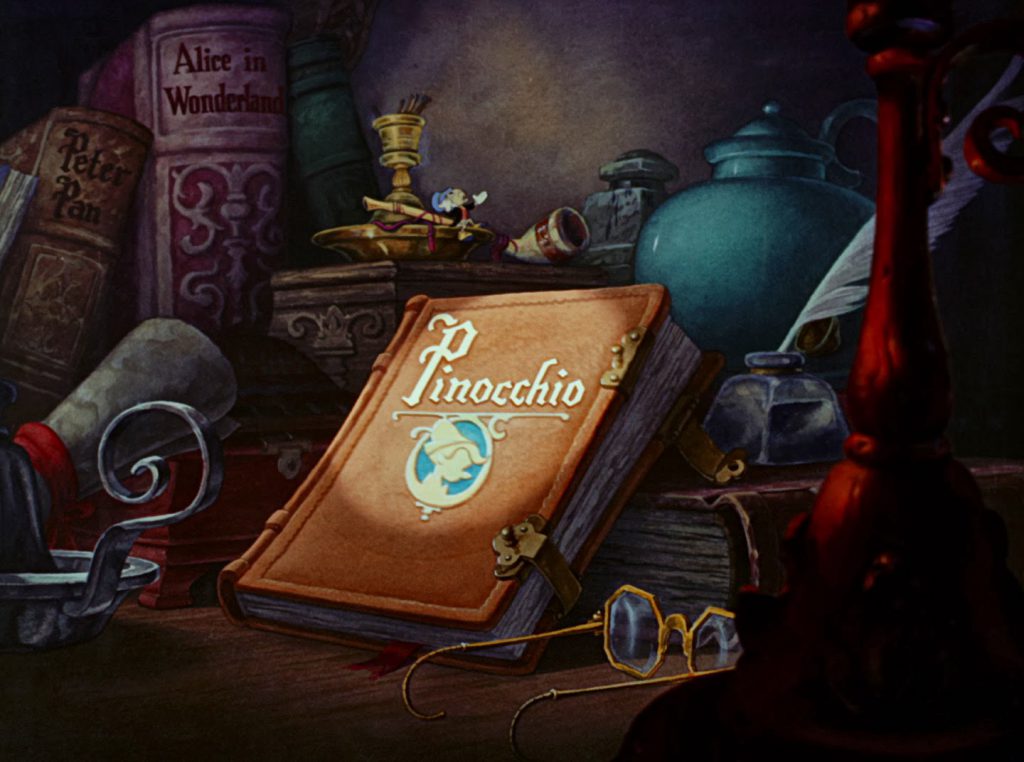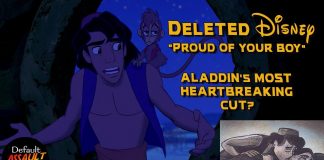When I first was going to review Pinocchio, I asked a few friends if they had interest in watching it with me only to discover that many of them were terror-stricken at the prospect. How could this be? After all, this is a film about a kindly old toymaker, an innocent little boy trying to make right in the world, a cute little kitty, a flirtatious fish, and…
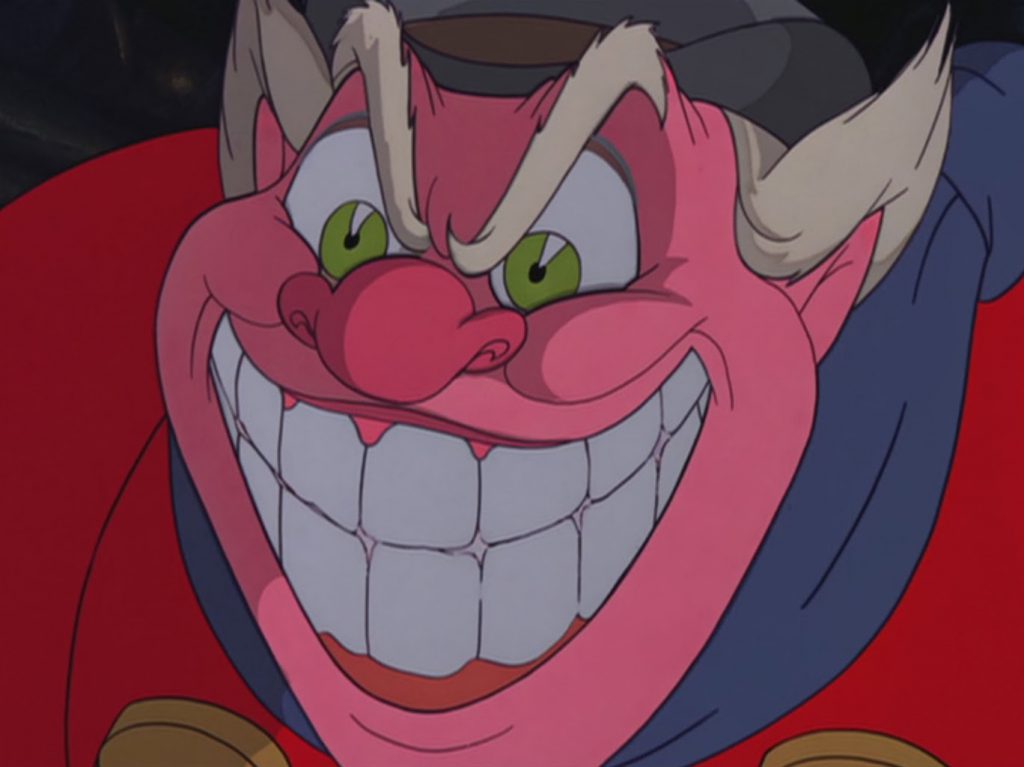
…oh, I get it. Pinocchio can be downright creepy on a visceral level. In many ways, it is an animated film geared more for adults than for little children (much like Walt Disney‘s follow-up project, Fantasia) and is chock full of terrifying imagery and themes. This is a world where it is completely nonplussing that a fox in a top hat can walk around in public duping innocents into horrific fates; where a gargantuan, homicidal whale can swallow ships whole; and where children can be viciously transformed into donkeys to slave away in salt mines for eternity. In retrospect, it could have been a lot bleaker especially in comparison with some of the insane events found in the original story on which it is based.
Original Story Comparison:
|
When I was a child, I read Lewis Carroll’s Alice’s Adventures in Wonderland and thought that I would never read a stranger, more bizarre story that could compare. Then I read Carlo Collodi’s The Adventures of Pinocchio. Dear God! The story was borderline tyrannical and depraved. It made Alice’s Adventures in Wonderland seem utterly ordinary in contrast – quite a colossal feat!
I could easily list a dozen paragraphs of all the outlandish and psychotic parts in Collodi’s story but for the sake of sanity (primarily my own), I’ll keep it down to a brief synopsis.
The story starts with the introduction of a kindly woodcarver named Geppetto. One day, he finds a piece of talking wood (Freud would have a field day with this) and decides to carve it into a puppet that he names Pinocchio. Pinocchio immediately runs away and has a few adventures that subsequently bring hellfire and destruction to this old man’s life. Along the way, Pinocchio meets a talking cricket who tries to warn the puppet of the perils of being a bad boy; however, before the cricket can assumingly break out into song, Pinocchio crushes him to death. Not to worry, however, because the cricket returns from the grave several times and continues to try to help his wooden murderer.
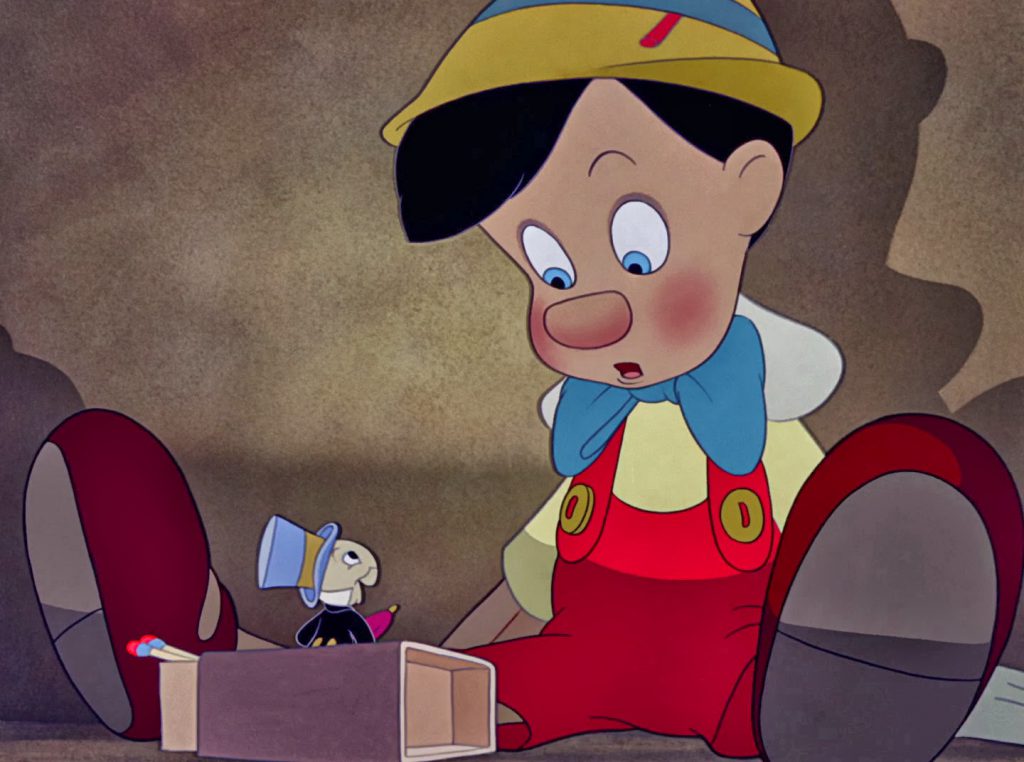
On his various adventures, Pinocchio comes across a theater, run by a puppet master named Mangiafuoco (by far, the manliest name ever), which is populated by a plethora of other talking marionettes. Afterward, he meets a blue fairy who, as it turns out, has died and is awaiting her hearse. He also runs afoul with a devious fox and cat who repeatedly con him with many different schemes until they grow bored and decide to execute him by hanging. Curiously, this is where the story was originally going to end until Collodi was persuaded to return a year later to resurrect his popular demon puppet.
In the second part, Pinocchio is miraculously healed with the help of the undead blue fairy, the ghost cricket, and undertaker bunnies (yes, you read that correctly). With Pinocchio alive and well, he sets out to continue his rein of terror. He meets a snake who immediately dies of a sudden cardiac arrest, rides a dolphin to the Island of Busy Bees, and travels to the wicked Toyland where he is transformed into a donkey. He is then sold to a man who drowns him in the ocean with the intent of skinning him to fashion a drum. This plan is foiled, however, when fish eat off Pinocchio’s donkey flesh to reveal the puppet underneath (what the hell did I just type?).
The story ends with Pinocchio redeeming himself by saving Geppetto who has been swallowed alive by a giant shark. This act, along with a few months of laborious farmwork, is rewarded when the blue fairy kisses a sleeping Pinocchio turning him into a real boy.
Walt Disney’s Pinocchio |
Pinocchio is one of Disney‘s better adaptations. What could have been an episodic, incredibly sadistic cautionary tale becomes a wholesome, complete piece with enduring characters and animation. Yes, it’s still dark and twisted but it is enhanced by characters that we authentically care for.
Disney’s Pinocchio cuts many of the irrelevant episodes from Collodi’s work and concentrates on its strongest set pieces. We have Pinocchio who comes to life thanks to a moonlight wish of Geppetto and is promised by the Blue Fairy that if he remains truthful and unselfish, he would become a real boy. This simple change gives the narrative direction and purpose in contrast to the strange meanderings of the original story. Yes, Pinocchio still becomes distracted and has some atypical adventures which cause strife for Geppetto, but not due to arrant malice on his part. He is just an endearing little boy who simply doesn’t know any better.
This, more than anything else, is what establishes the biggest rift between Collodi’s story and Walt Disney’s interpretation – we actually are made to care for the puppet. Collodi’s Pinocchio makes Jar Jar Binks a charming and delectable character by comparison. His Pinocchio is a wicked, narcissistic creature. When he eventually gets hung in the original story, you don’t pity him in the slightest.
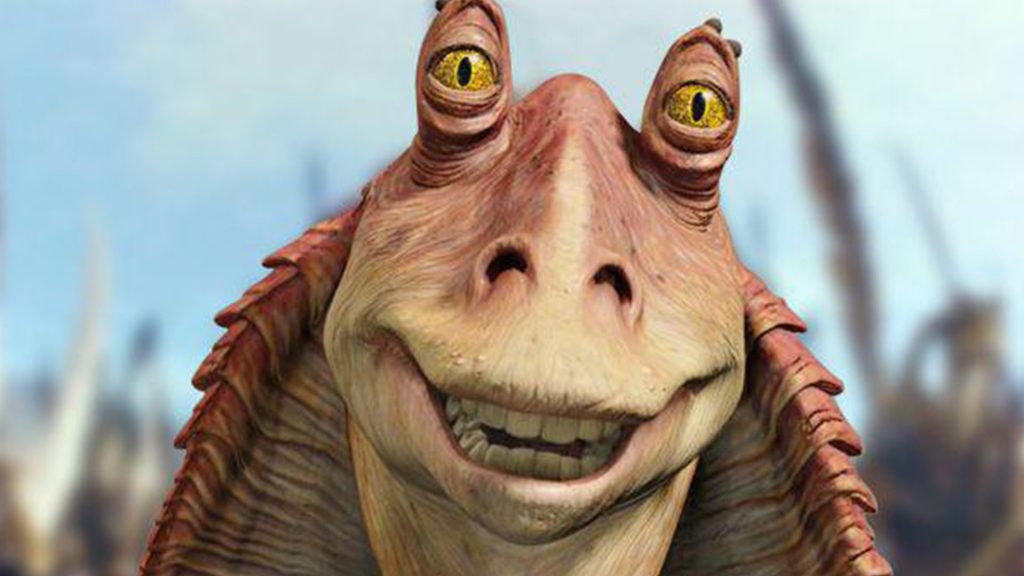
Pinocchio can easily be broken up into the following sections: The Birth of Pinocchio; Stromboli the puppeteer (sadly, Mangiafuoco’s sexy name is converted into an Italian fast food delicacy); Pleasure Island (Toyland from the original tale); and Monstro the Whale (instead of the giant shark). What keeps the film from being overwhelmingly episodic are the character threads that weave throughout the different episodes such as Foulfellow and Gideon (the fox and cat) initiating both the Stromboli and Pleasure Island segments. It’s not entirely successful, but it is still engaging and as cohesive as it could be without destroying the integrity of the story. This is a case of the character arcs, rather than independent plot points, guiding the film’s narrative and it works exceedingly well.
Accordingly, when Pinocchio does succumb to temptation, the results are appropriately appalling. Whether it is the threat of being turned into firewood…
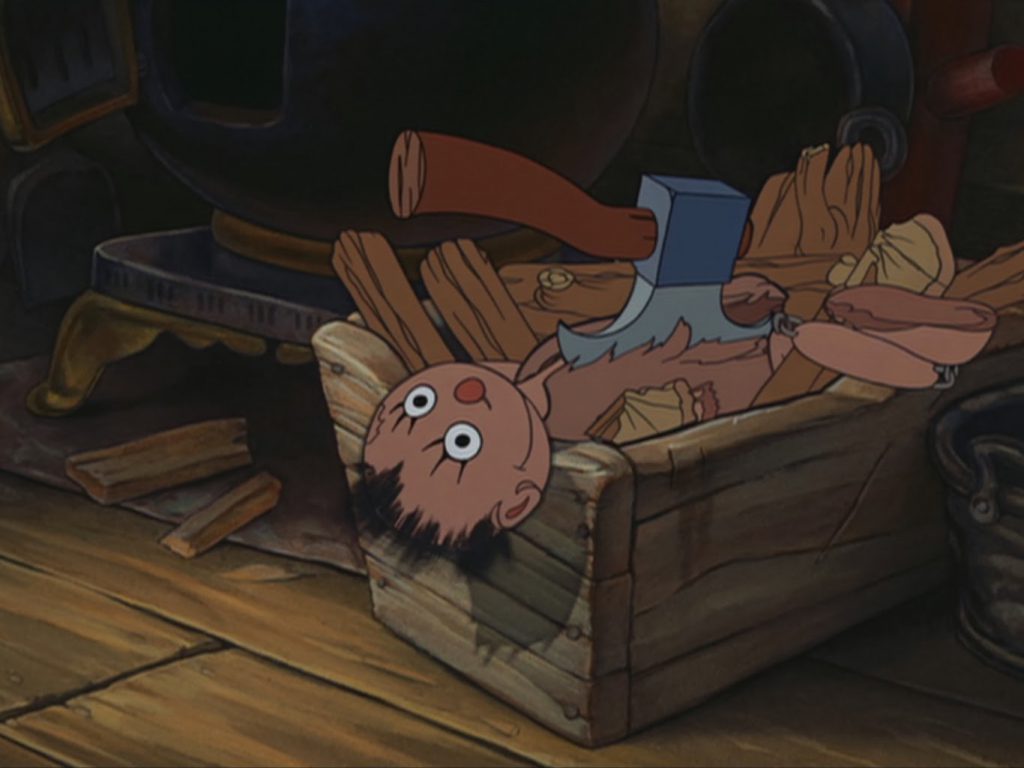
…or the horror of turning into a donkey and sold into slavery,…

…Pinocchio doesn’t hesitate to show the outcome of bad decisions. For instance, when we see Pinocchio at Pleasure Island, it is acceptable that he is depicted smoking and drinking alcohol. It is to the film’s credit that it did not shy away from illustrating these terrible decisions because it strengthens the eventual moral. One can only imagine how it would have turned out if it was instead made in today’s politically correct climate:
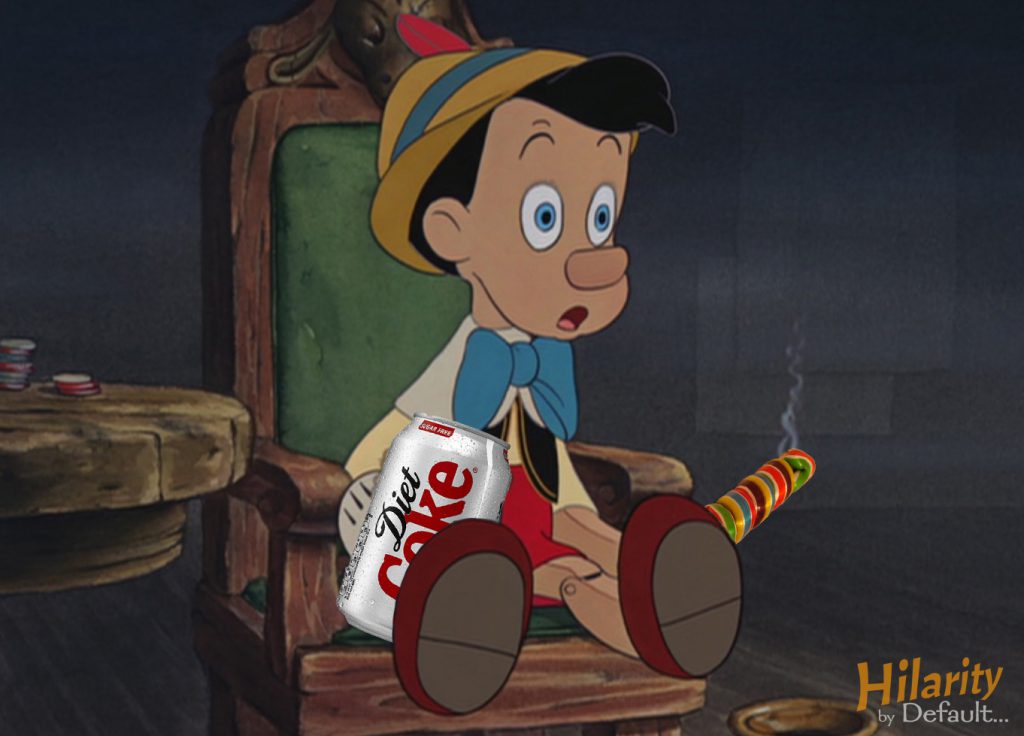
Ultimately, when the main theme explores the outcomes of temptation, it is only fair that the consequences are complementary dire. This is part of what elevates Pinocchio into greatness. It doesn’t pull its punches thereby giving its character obstacles worth overcoming.
Unlike Snow White and the Seven Dwarfs, Pinocchio features much stronger lead characters. Pinocchio is perfectly believable as a little boy. Sure he messes up, lies when he is scared, and can be gullible to a fault, but these are traits that can be attributed to all children. What makes him endearing is that you don’t doubt his aspiration to overcome these flaws – once he understands them, that is.
The real breakthrough star of the picture, however, is Jiminy Cricket. Jiminy is much more prevalent to the story than most secondary Disney characters. The film not only begins and ends with him, but he has an appealing character arc that complements Pinocchio’s very well.
Despite being street-smart with a tendency to speak on a soap box (literally in one scene), Jiminy is a flawed character. What is often overlooked is that he actually turns his back on Pinocchio twice throughout the film. Although he proclaims himself an expert on temptation…
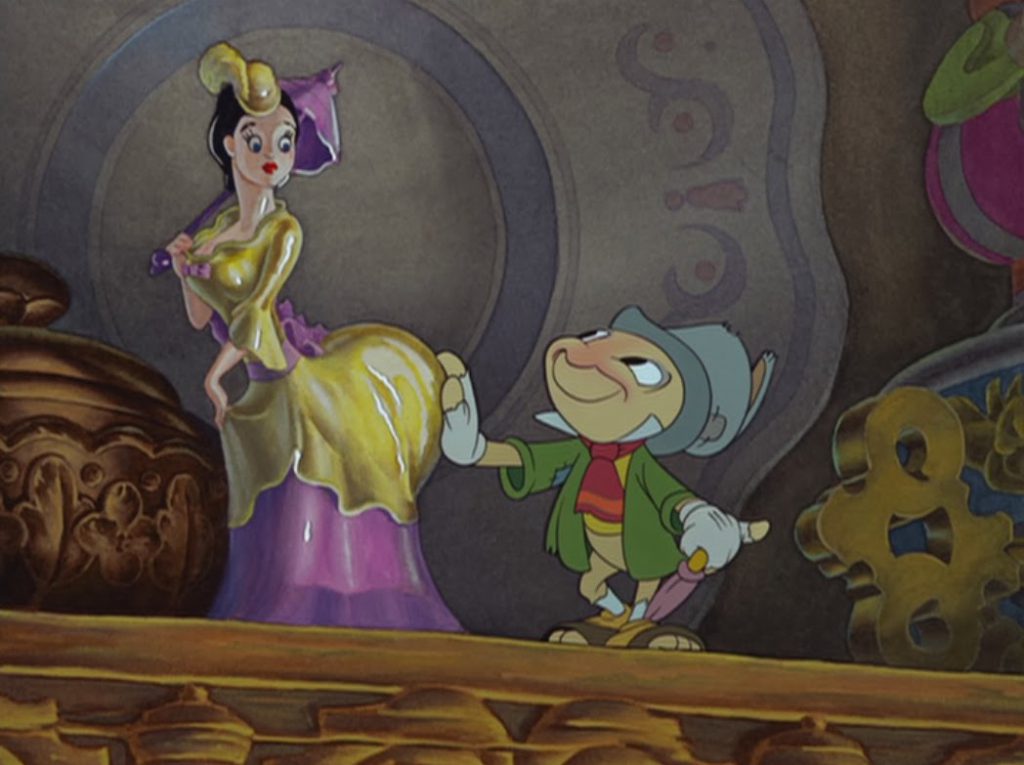
…he succumbs to it quite a few times. What I hadn’t noticed as a kid was how considerably randy he is. He hits on everything that moves (real or not!).

Either way, his journey parallels Pinocchio’s very well. When the puppet reaches the point where he takes responsibility for himself and tries to save his father, Jiminy is right there with him.
Geppetto is truly a fun character. He is absolutely hilarious while also providing the film with a sense of heart. Without this proportion, we wouldn’t be heartbroken when we later see him vainly searching the streets in the rain for his boy or attempting to sacrifice himself so that the brave puppet can survive the attack from Monstro the Whale. In such a way, he is the most important character in the film. If we didn’t care for him, we wouldn’t bother with Pinocchio’s journey to redemption.
On the other hand, Geppetto can be a bit questionable at times. This old codger smokes in his bed, torments his cat Figaro at every opportunity, and sleeps with a loaded gun under his pillow (which he doesn’t hesitate to grab when he first hears Pinocchio in his work shop).
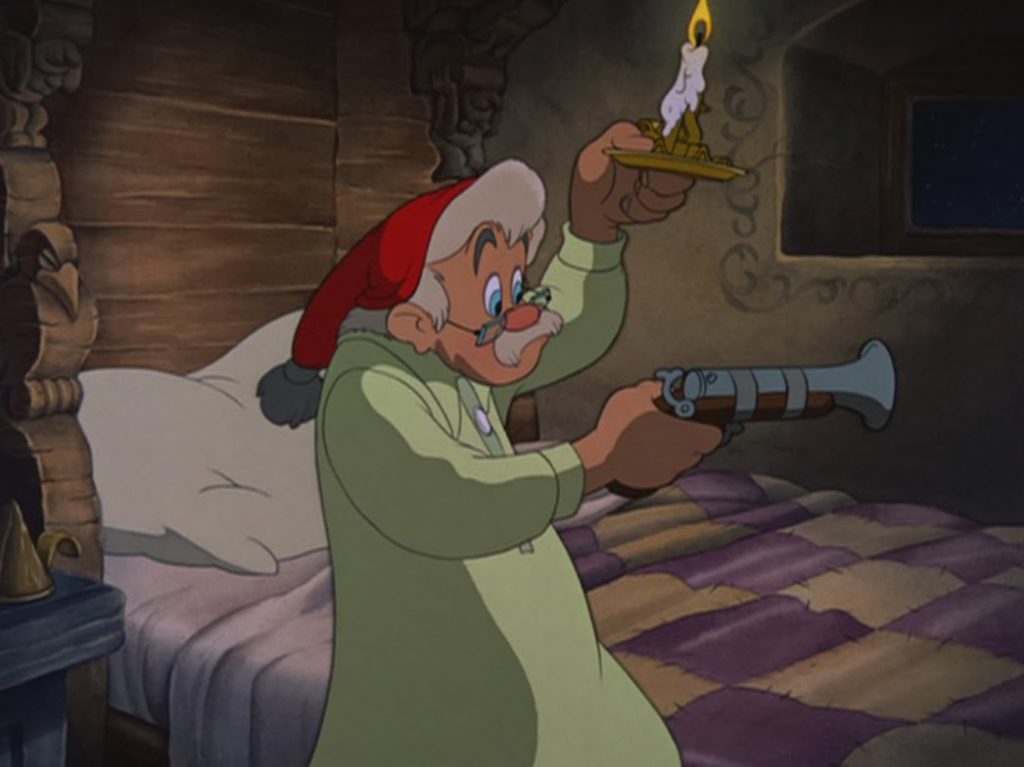
Geppetto’s pets, Figaro the cat and Cleo the fish, although amusing at times, serve little more than a soundboard for him. Their presence help humanize the old man rather than just having him running around the shop alone, muttering to himself, and wishing wooden objects came to life.

Regardless, they are both bursting with personality and their humorous scenes create a good balance to contrast the grimmer points in the picture.
The film’s villains, whilst being among the most corrupt in the Disney library, are two-dimensional in their pursuits. They exist for the sole purpose of giving Pinocchio obstacles to overcome. This explains why, beyond their episodes in the plot, we never see or hear from them again (and why they all escape any comeuppance).
Foulfellow and Gideon are the only exceptions (as they appear a few times to tie the threads between a few chapters) but I suspect that is more due to the fact that they are the lightest of the main villains. They are funny, conniving, and greedy and their scenes are among the highlights of the film. Thankfully, unlike Collodi’s original story, they don’t end up hanging Pinocchio midway through the feature.
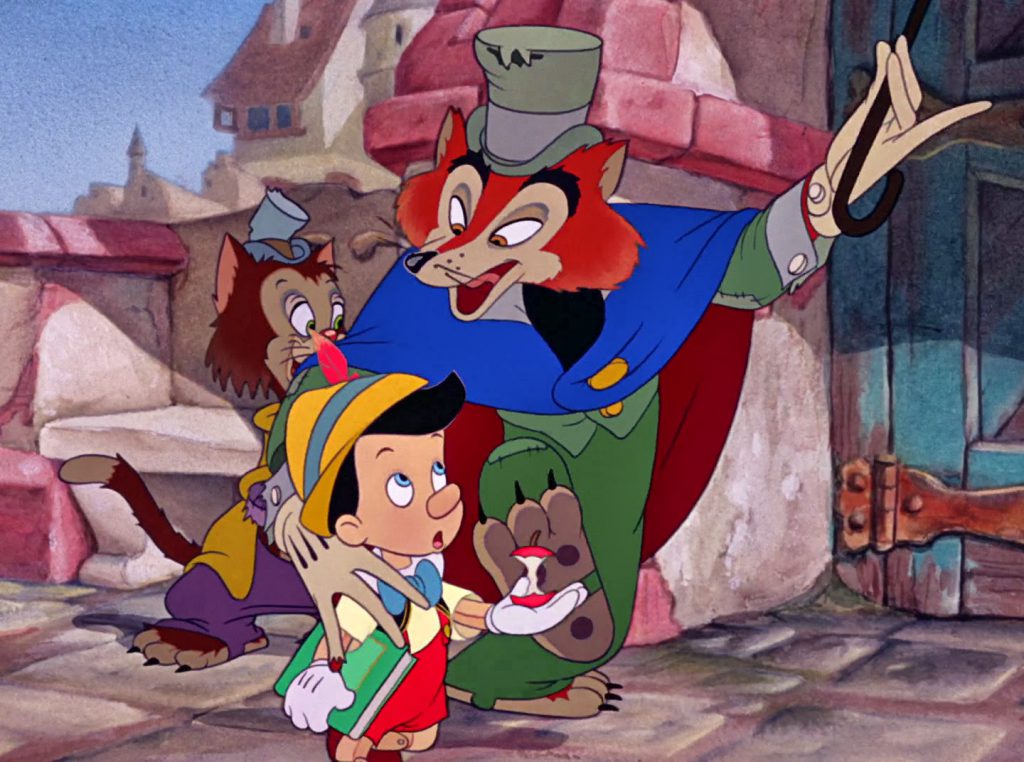
Stromboli is probably the most memorable villain in the film. His animation and personality are both hilariously exaggerated. His dance-like movements are perfectly complementary to his egregious personality and his literal squeals of anger are both amusing and frightening.
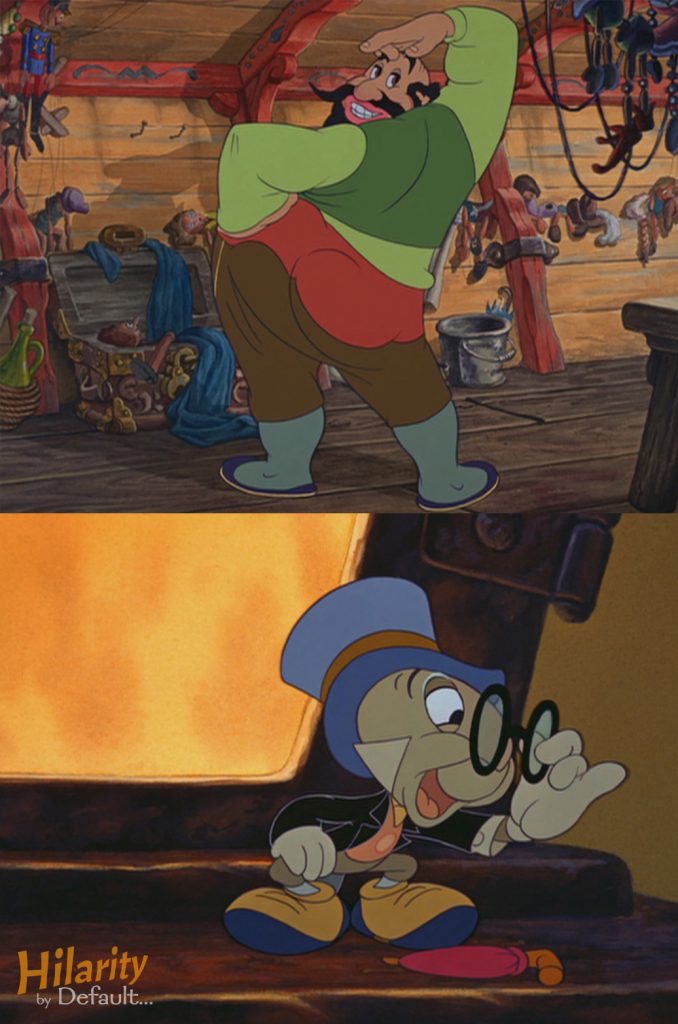
The same cannot be said of the Coachman. There’s only one word that can describe him – “evil.” That’s it, no more. Even his face is satanic. Yet, I’m sure that if I ever were to picture the perfect face of a demonic donkey slave driver, his would be it. Actually, now that I think about it, that would make an excellent name for a drink:
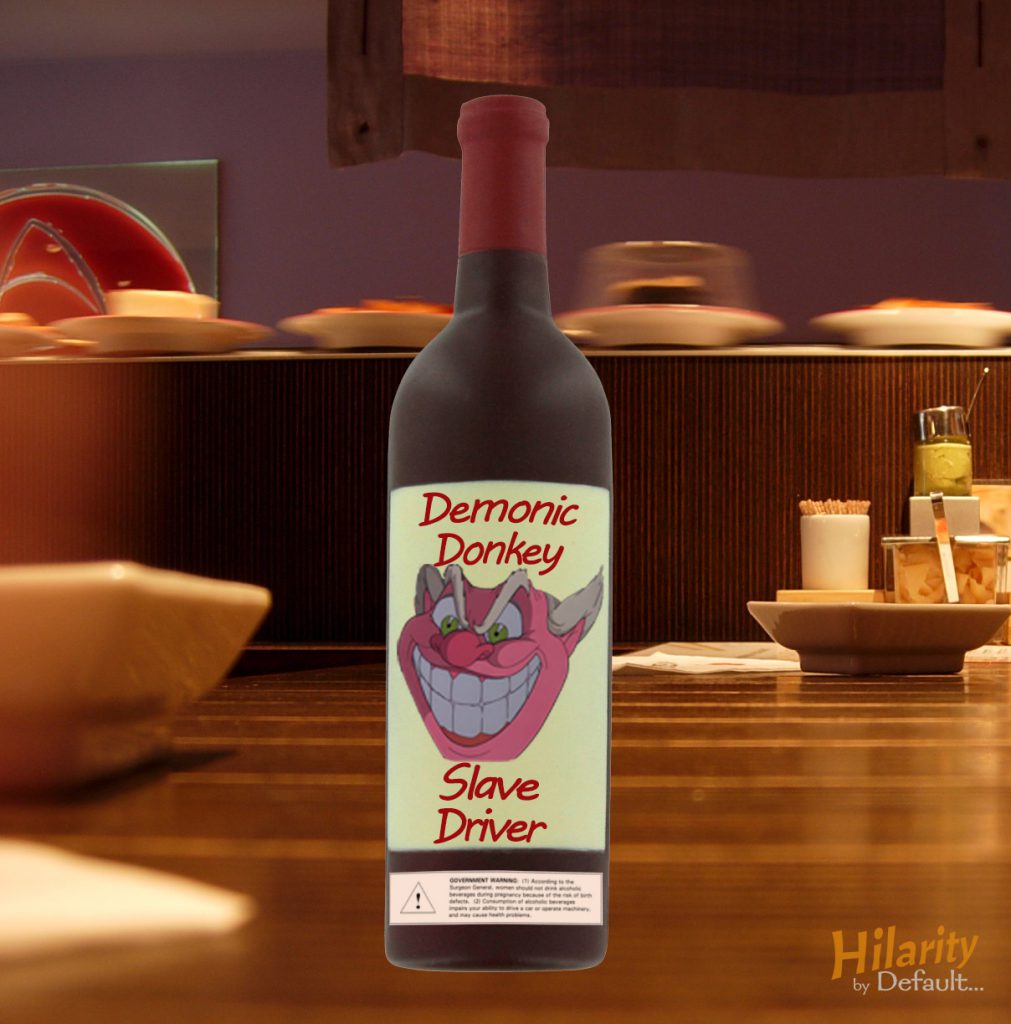
The Animation and Music of Pinocchio |
The animation in Pinocchio is among the finest from the Disney canon. Leaps and bounds ahead of Snow White, Pinocchio achieves what many animation historians claim is the most technically perfect animated film of all time. Of the films released in Walt Disney’s lifetime, only Fantasia, Bambi, and Sleeping Beauty truly compare to the artistry and detail presented in this film.
From the sweeping shots through Geppetto’s village, to the disturbing carnival of Pleasure Island, to the underwater world during the search for Monstro the Whale, Pinocchio is a film rich with atmosphere.
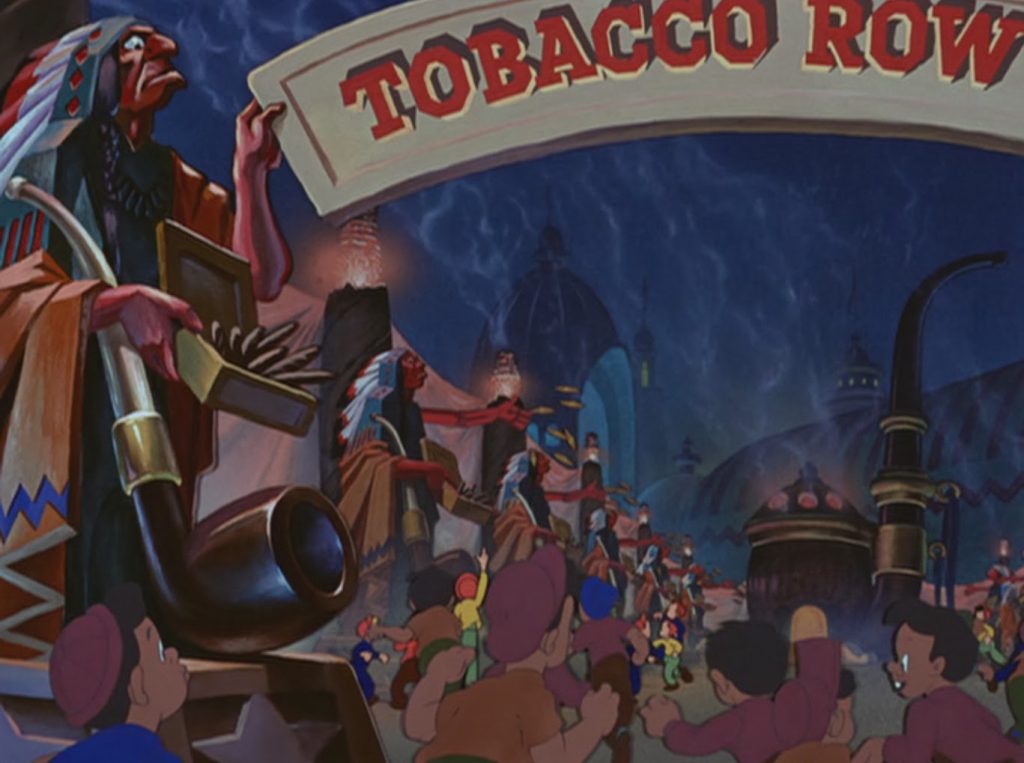
To anyone who ever complains that traditional 2D animation is inferior, I would cite the opening daylight shot of Geppetto’s village in its defense. From a close-up of church bells ringing, we pan seamlessly over the roofs of the village and zoom through the streets and alleys as the children prepare for school until we get to the front door of Geppetto’s home. It is a remarkable accomplishment and more immersive than many of the current “superior” CG animated films.
The music in Pinocchio is outstanding. It won two much deserved Academy Awards for Best Song (“When You Wish Upon a Star”) and Best Score – the first Disney animated film to win in these two particular categories, and the last until 1989’s The Little Mermaid.
It’s quite fitting that Disney’s ultimate song of hope is to be found in one of its darkest features. “When You Wish Upon a Star” is not only the film’s best song but it has become the signature mantra of the Walt Disney Company as a whole. Heck, even their cruise ships use it as their horn sounds (which is, undoubtedly, the greatest achievement any song can ever have).
When I was a kid, “I’ve Got No Strings” was not only my favorite song in the picture (next to “Hi-Diddle-Dee-Dee”), but also my favorite scene. It’s colorful, funny, and complex plus Pinocchio’s interactions with the female puppets are both innocently suggestive and quite hilarious.
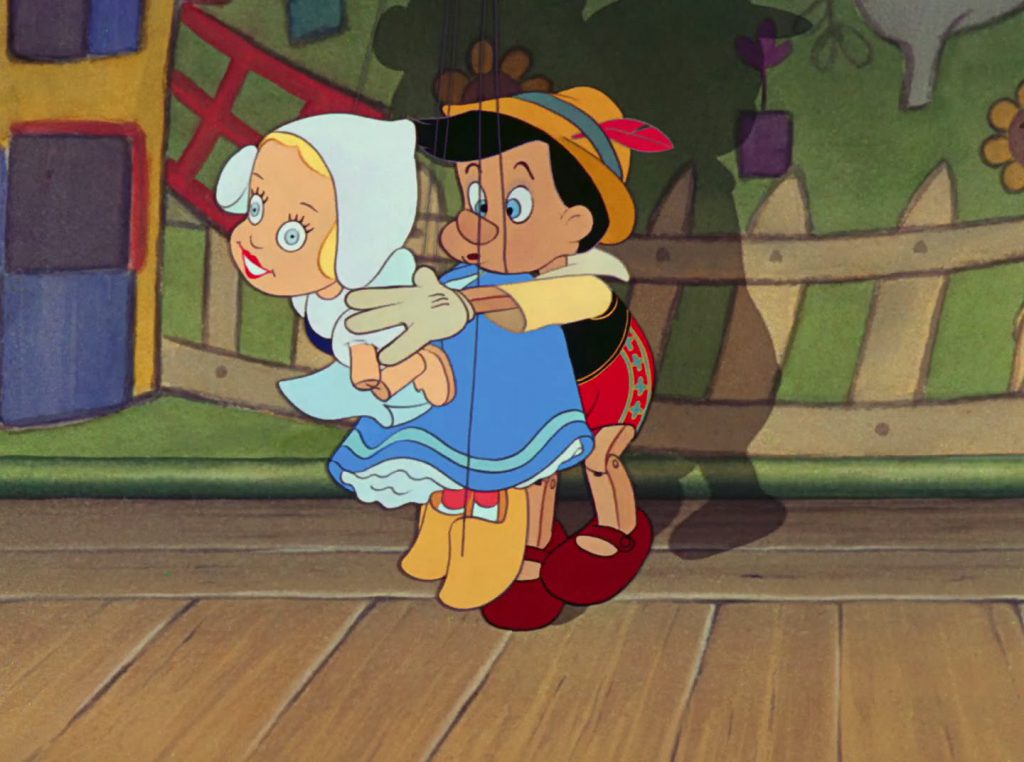
I totally understand Pinocchio’s frightened appearance throughout the scene. If I was surrounded by expressionless female puppets telling me that if I were to woo them they’d cut their strings off, I’d be quite scared too!
Final Thoughts |
I have been very nitpicky with Pinocchio because, when it comes down to it, you have to dig deep to find any glaring flaws. The film is simply one of Disney’s finest. The animation, music, and character design are all exemplary of what the Walt Disney Studio does best.
No other adaptation has come close to being as successful or memorable as Disney’s (and I would never, ever dare compare it to the travesty of Roberto Benigni’s version). It is the definitive rendition of the story. Considering how creepy and disjointed Carlo Collodi’s original is, for once it is not a shame that Walt Disney’s version has overshadowed any of the competition.
Man-Card Retribution |
Pinocchio is perhaps the closest Disney ever came to producing a horror film (that is, other than Home on the Range). I know adults who would rather sit through The Exorcist on repeat than risk childhood nightmares of donkey transformations and drowning puppets by revisiting Pinocchio.
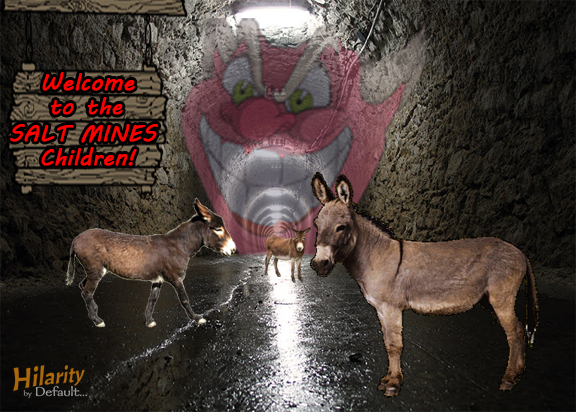
If that doesn’t earn a Man-Card, I don’t know what does.
Man-Card Verdict: +1
Random Afterthoughts… |
I can tolerate the idea that Pinocchio’s nose grows when he tells a fib. In a movie filled with such bizarre imagery, this one scene isn’t particularly far-fetched. What I do find odd, however, is that when his nose reaches its maximum size it produces a nest with living birds. Let me get this straight – Pinocchio’s lies create life? This puppet has the power to repopulate avian ecosystems with the dynamism of his nose and fibs?

I always found it quite strange that even though Pinocchio spends a large amount of time walking and talking at the bottom of the ocean, he still drowns in a puddle on the beach. How is this possible? Are puddles kryptonite to marionettes?
The Blue Fairy, despite being the film’s representation of truth and kindness is a bit of a hypocrite. After chiding Pinocchio for lying, she tells him that she will not be able to help him again. A little later, she does so anyway when she sends him a note detailing Geppetto’s fate with Monstro. I wonder how big her nose got?
An interesting little Easter egg: during the film’s opening storybook introduction, you can clearly see two other books in the background – Alice in Wonderland and Peter Pan (a little more than a decade before Walt Disney eventually adapted them back-to-back).
I was going to write something about Geppetto’s song, “Little Wooden Head,” mostly because of its fantastic instrumental, but I’m much too frightened to Google search the phrase “little wooden head.”
Let me just say this: Geppetto has the most glorious watch in existence!
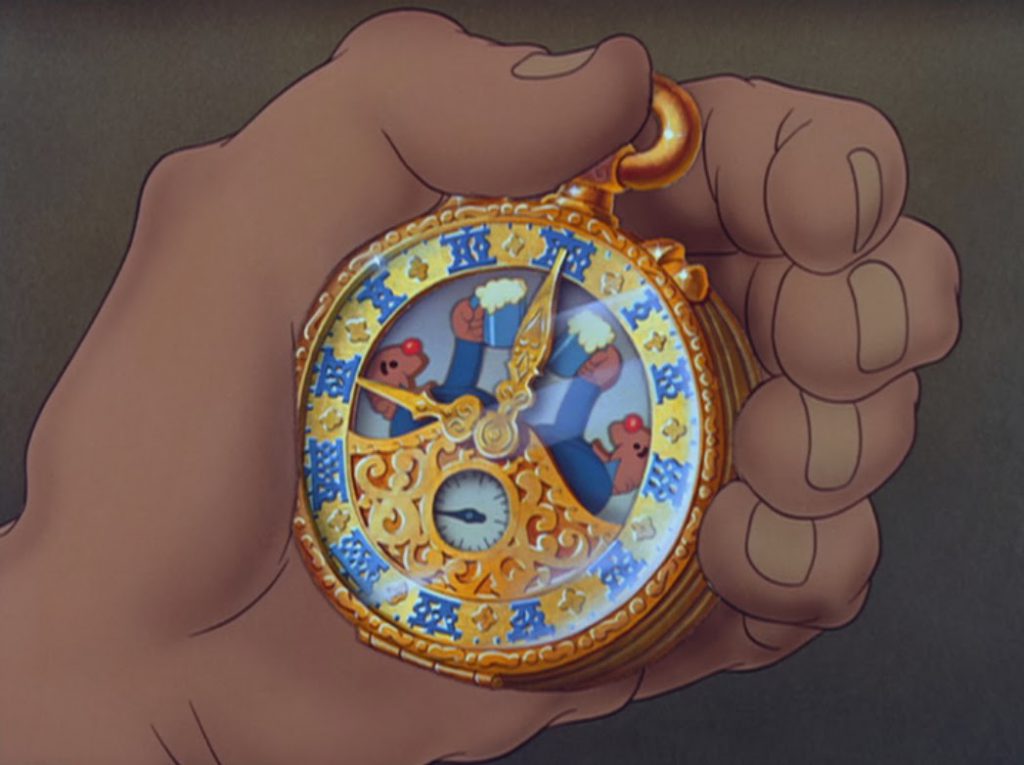

Next time, we turn back the clocks to explore Mickey Mouse‘s first true animated appearance, “Plane Crazy” (1929) – a short that definitely lives up to its name. For more Default Disney, click here.





